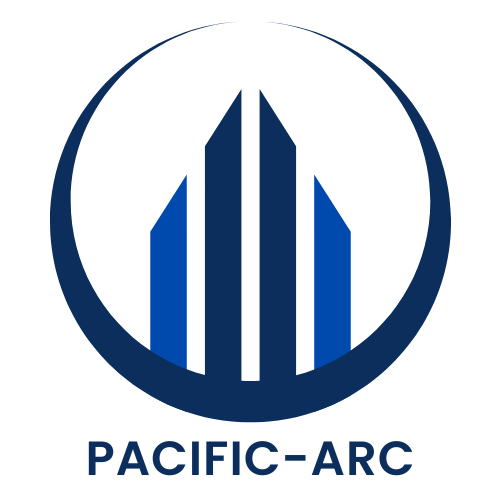Buying a home is like embarking on a thrilling roller coaster ride. You’re excited, maybe a bit nervous, and there’s always that one twist you didn’t see coming. One of those twists? Closing costs. They’re the sneaky little fees that pop up right when you think you’ve got your budget all figured out. But do these closing costs include your down payment? Spoiler alert: they don’t!
Table of Contents
ToggleUnderstanding Closing Costs
Closing costs represent important fees that homebuyers encounter during the purchase process. These costs exist alongside the down payment and contribute significantly to the total expenditure when acquiring a property.
What Are Closing Costs?
Closing costs encompass various fees that a buyer pays beyond the home price. These expenses typically arise during the finalization of a real estate transaction. Buyers encounter closing costs for services such as title insurance, property taxes, and inspection fees. Depending on the specific circumstances, closing costs can range from 2% to 5% of the home purchase price. Buyers should prepare for these costs, as they can add hundreds or thousands of dollars to the overall budget.
Common Components of Closing Costs
Common components of closing costs include a mix of fees and charges. Title insurance protects against potential legal issues tied to property ownership. Appraisal fees assess the property’s market value before the transaction. Home inspection fees ensure the property is in good condition. Furthermore, attorney fees may apply if legal representation is involved. Depending on the lender, origination fees can also factor in the total. Each of these components contributes to the overall cost buyers face at closing.
The Down Payment Explained


A down payment is a portion of the total home price that buyers pay upfront. This amount typically ranges from 3% to 20% of the purchase price, depending on the type of mortgage and lender requirements.
Definition of Down Payment
A down payment represents an investment made by the buyer toward their home purchase. It reduces the amount financed through a mortgage. Many lenders require a minimum down payment as a show of commitment. A higher down payment often leads to lower interest rates or better loan terms. Buyers seeking to avoid private mortgage insurance must pay at least 20% of the home’s price upfront.
Importance of the Down Payment
The down payment plays a critical role in the home-buying process. A substantial down payment may enhance a buyer’s chances of loan approval. It directly influences monthly mortgage payments and overall financing costs. Buyers with larger down payments often benefit from reduced monthly payments. A solid down payment also provides buyers with immediate equity in their new home, strengthening their financial position.
Relationship Between Closing Costs and Down Payment
Closing costs and down payments serve different purposes in the home-buying process. Understanding their distinctions helps buyers manage their finances more effectively.
Do Closing Costs Include Down Payment?
Closing costs do not include the down payment. The down payment is an upfront percentage of the total home price, while closing costs encompass various fees incurred during the transaction. Buyers should anticipate closing costs typically ranging from 2% to 5% of the purchase price, which is in addition to their down payment. Homebuyers must account for these costs separately when preparing their budgets.
Key Differences Between Closing Costs and Down Payment
Closing costs cover charges such as title insurance, appraisal fees, and attorney fees. A down payment, however, represents a committed portion of the total home price, helping to reduce the mortgage amount financed. Many lenders require a specific down payment percentage as proof of buyer commitment. Meanwhile, closing costs often arise just before finalizing the sale, making them an essential factor in the closing process. Understanding these differences aids buyers in navigating their financial commitments effectively.
Strategies for Homebuyers
Homebuyers must prioritize budgeting for both closing costs and down payments. Determining total expenses ensures better financial preparedness. Closing costs typically range from 2% to 5% of the home’s purchase price, while down payments generally vary from 3% to 20%. By estimating these amounts early, buyers can allocate funds and avoid surprises. Creating a detailed budget helps navigate these expenses effectively.
Budgeting for Closing Costs and Down Payment
Budgeting accurately includes accounting for both closing costs and the down payment. Closing costs involve various fees that homeowners will encounter at the transaction’s end, whereas the down payment is an initial investment toward the home. Many experts suggest calculating at least 5% for closing costs based on the purchase price. Homebuyers benefit from incorporating both figures into their financial plan. Explore multiple sources, including lender quotes and local government programs, to create a comprehensive approach to budgeting.
Tips for Reducing Closing Costs
Reducing closing costs presents several opportunities for homebuyers. Comparing lender quotes aids in identifying competitive fees. Negotiating services such as appraisal fees and title insurance often results in potential savings. Seeking assistance through grants or programs that target first-time buyers can alleviate financial burdens. Many buyers overlook these options, but being proactive can minimize overall expenses. Additionally, asking sellers to contribute toward closing costs may provide significant relief and make a home more affordable.
Homebuyers must grasp the distinction between closing costs and down payments to navigate the financial landscape of purchasing a home. While the down payment signifies a commitment toward the home’s purchase price, closing costs represent additional fees that can catch buyers off guard. Understanding these separate expenses is vital for effective budgeting and financial planning.
By anticipating both closing costs and down payments, buyers can prepare themselves for the total financial commitment involved in homeownership. Utilizing strategies to minimize closing costs can further enhance affordability, making the journey to owning a home smoother and more manageable.





